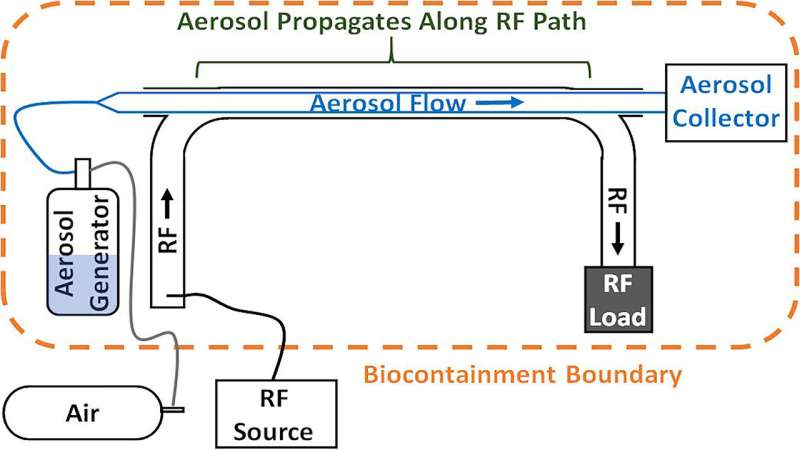
As the pandemic has continued to spread globally, studies indicate the COVID-19 virus may be contained in aerosols that can be generated and spread through breathing, coughing, sneezing, or talking by infected individuals. Researchers are increasingly focused on developing tools and methods to assist in decontaminating surfaces and spaces.
While scientists have previously explored the use of electromagnetic energy to deactivate flu virus in bulk fluids, less work has been done to understand the role of nonionizing radiation, such as microwaves, in reducing the infectivity of viral pathogens in aerosols. The tools required to both safely contain contaminated aerosol streams and expose these aerosols to controlled, well-characterized microwave doses have not been readily available.
In Review of Scientific Instruments, researchers from the Air Force Research Laboratory report development of a set of experimental tools capable of presenting electromagnetic waves to an aerosol mixture of biological media and virus with the capability to vary power, energy, and frequency of the electromagnetic exposure. The researchers seek to better characterize the threshold levels of microwave energy needed to inactivate aerosolized viral particles and, thus, reduce their ability to spread infection.
“In this way, we believe our experimental design is capable of a fundamental investigation of a wide variety of inactivation mechanisms. This range of capability is especially important given the range of potential interaction mechanisms found in the literature,” said co-author John Luginsland.
The key portions of each system fit within standard biosafety cabinets, ensuring multiple layer containment of pathogens. Additionally, the systems are designed to prevent release of microwave radiation into the laboratory environment, which, at elevated levels, could potentially interfere with diagnostic equipment and other electronics.
During initial experiments, the AFRL researchers are exposing a human-safe coronavirus surrogate, bovine coronavirus, to a range of microwave waveforms at frequencies ranging from 2.8 GHz to 7.5 GHz.
“The bovine coronavirus is similar in size and configuration to human coronavirus but is safe to humans,” said co-author Brad Hoff.
If exposure to microwaves is demonstrated to be sufficiently effective in reducing infectivity, experimental efforts could then proceed to use aerosols containing COVID-19 coronavirus or other human-infecting pathogens.
Source: Read Full Article
